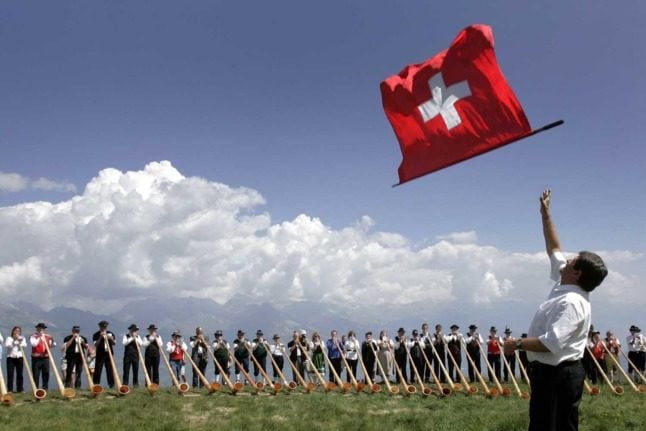After winding back several coronavirus measures in April, Switzerland looks set to relax a range of rules towards the end of May.
While the government was initially tentative when relaxing measures on April 19th, the spike in cases and hospitalisations many feared did not eventuate.
In fact, the epidemiological situation has been steadily improving since mid-April.
Covid-19 update: The stats that show Switzerland is winning the pandemic battle
While vaccinations are slowly kicking into gear – 40 doses have been administered for everyone 100 members of the population in Switzerland – the government has stuck firm to its commitment that all adults who want the vaccine will get it by July.
As a result, Switzerland’s ‘green passport’ – which will entitle vaccinated people with certain freedoms – is expected to be also released in time for summer.
Here’s what summer might look like in 2021.
Travel
Perhaps the most common question we have had from our readers and members since the start of the pandemic has related to travel – and specifically when things will go back to normal again.
Whether that be for people born in Switzerland who want to holiday or foreign residents wanting to get home, Switzerland’s travel and quarantine rules have been a major talking point.
One major change set to come in at the end of May will be the relaxation of the quarantine rules for the vaccinated (along with those who have recovered from the virus).
This is of course good news for Swiss who want to go abroad, but it does not represent a return to normal with regards to travel – particularly for people visiting Switzerland.
Officially, the Swiss government recommends against travelling to regions with virus mutations, but has not restricted travel to these regions. Upon returning however you may need to quarantine, even if you have been vaccinated or have recently recovered from the virus.
People from outside the Schengen/EFTA zone are still barred from entering Switzerland – and as yet there has been no indications as to when that is set to change.
UPDATE: When will Brits be allowed to travel to Switzerland again?
Restaurants
Restaurants will be allowed to serve people indoors at tables of up to four people.
People sitting indoors will be required to wear masks when not eating or drinking. People standing and moving indoors will also be required to wear masks.
Clubs are not yet allowed to open, with no indication as to when this will change.
Outdoor areas and terraces have been opened since April 19th.
Meeting people
A maximum of ten people are permitted indoors, while a maximum of 15 are allowed outdoors.
This limit is currently in place (as at mid-May) and is not expected to be changed.
The reason for this is that the majority of infections take place in small group settings, reports the NZZ newspaper.
Therefore, Swiss authorities want to minimise the risk of infection in group settings.
Events
The maximum will be higher for public events than private events, however venues will need to submit plans to show how infection risks will be minimised.
As of May 31st, the number of people allowed to gather indoors will increase from 50 to 100 people, while the cap on outdoor gatherings will increase from 100 to 300 people.
Dancing will remain banned for the foreseeable future.
Sports
A maximum of 30 people rather than 15 will be allowed to participate in outdoor sports.
The decision was made on the basis of a three-phase re-opening plan that the government outlined in April.
READ MORE: EXPLAINED: What is Switzerland’s three-phase plan for ending Covid-19 restrictions?
Indoor sports without a mask will be capped at 15 people in the same hall.
Contact sports such as judo or wrestling are only allowed indoors without a mask in constant groups of four people.
The area requirement for ‘quiet’ indoor sports (e.g. yoga) will be adjusted from 15 to 10 square meters per person.
EXPLAINED: What are Switzerland’s current coronavirus measures?
Wellness centres and thermal baths will again be allowed to open, however only one person per 15 square metres will be allowed.
Working from home, currently a requirement under Swiss law, will again become recommended rather than required.
The cap on university lectures of 50 students will also be scrapped, provided the universities put in place effective contact tracing solutions.
Schools
Schools have been taking place largely as normal in Switzerland, although there is a maximum on the amount of people who can sit in a lecture hall (50).
The Federal Council said it wants to lift this limit, but will require that universities develop a hygiene plan in order to allow this to take place.
Theatre and cultural events
As of May 31st, the number of people allowed to gather indoors will increase from 50 to 100 people, while the cap on outdoor gatherings will increase from 100 to 300 people.
This also includes political and religious events.
Club events – where a hygiene plan has been produced – are from May 31st allowed to include a maximum of 30 people, rather than the current 15.



 Please whitelist us to continue reading.
Please whitelist us to continue reading.
Member comments